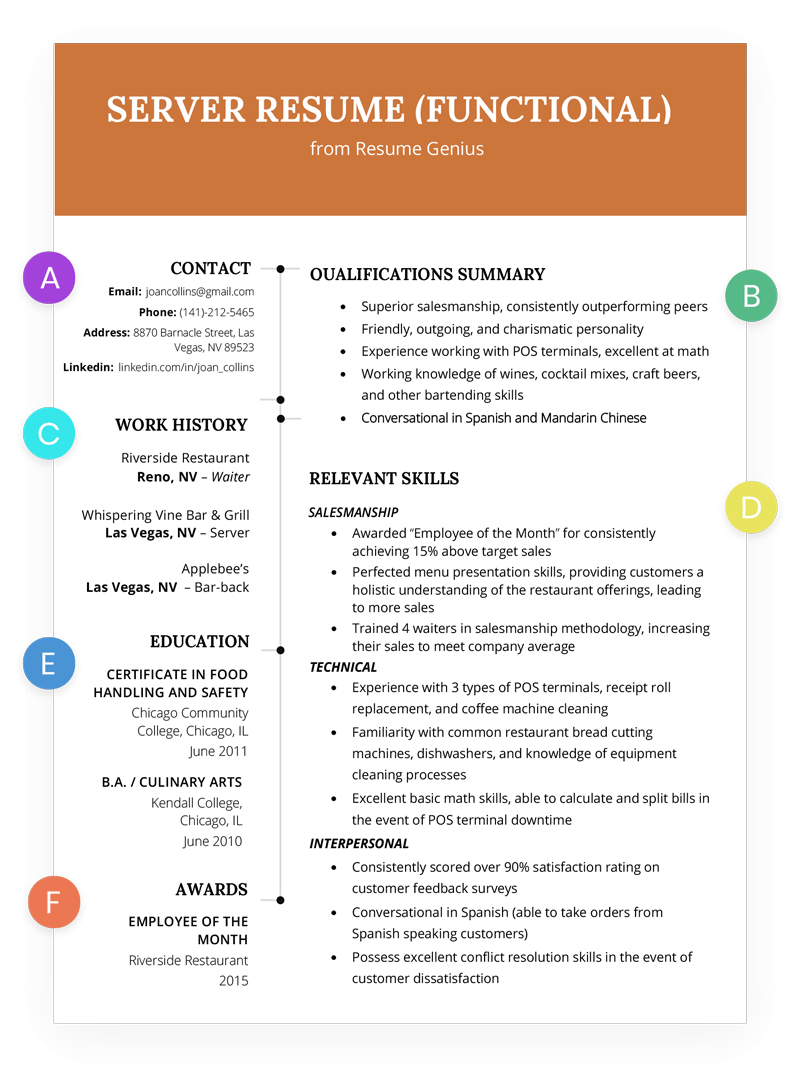
Therefore, it is better to cover up your recent out-of-work period with something relevant and powerful (for example, your accomplishments). If a hiring manager notices a recent gap in your work history, it may be a red flag. When you have no recent/relevant experience. So when should you write a functional resume then? In other words, a functional resume sometimes may be your best option. But like we said before, there are cases when listing your work experience in a reverse-chronological order could do even more harm (see the list below). Otherwise, they are forced to draw their own conclusions basing them on vague responsibilities. Hiring managers want to know the context where you used the skills to get a better idea about you as a candidate. The reason they do it is that all of the responsibilities and accomplishments provided are usually taken out of the context. The thing is that employers often skip past the skills part and go straight to employment history. There is a certain risk in using a functional (skills) resume. When Should You Write a Functional (Skills) Resume? We strongly recommend to include the employment history section right after the career highlights section where you list only job titles, company names, and employment dates (see our functional resume sample below). For example, if you are applying for a sales job, one of the categories would probably be “Customer Service”, under which you will list three-six bullet points that demonstrate how you have applied this type of skills in various roles. In other words, you select the functions that are relevant and list all your responsibilities under these categories, thus focusing on information that is important for employers. The work experience section is usually called “Experience Highlights” or “Career Highlights” and it features all relevant skills under different categories (functions). While reverse-chronological and chronological resumes place a great emphasis on work experience outlining all of the job details, a functional format implies a different organization of this section. The biggest difference is the main body section. Obviously, this type of format resembles traditional resumes: it starts off your name, address, and contact details and lists your skills, education, and memberships toward the end of the document. So if you want to write a skills-based resume, you would single only relevant accomplishments and responsibilities and combine them under one section to help the hiring authorities have a holistic understanding of how you match the requirements. Unlike the conventional format, a functional resume highlights the most relevant responsibilities to paint a broad picture of your potential contribution. That said, a functional resume can sometimes be a great solution… What is a Functional Resume?Ī functional resume (also called a skills-based resume) is the marketing document that places the emphasis on your skills rather than your employment history. Then submitting your one-size-fits-all reverse-chronological resume may be the road to nowhere. It may well be that there are some jobs you would love to apply for but your work experience doesn't look cohesive at all. The golden rule of resume writing is to customize the document for every single opportunity you choose to apply for. It is all about showcasing the most relevant experience and skills after all sometimes, a functional resume is a better way to make your pitch and help hiring managers better understand how your skill set aligns with what the company needs. While the hiring managers prefer reverse-chronological resumes over any other kind, there are situations when a functional resume will be more appropriate though.

Many people (both career experts and job seekers) believe that a functional resume will less likely help candidates accomplish this purpose. In the "Design" section, the action verb Designed is overused (could try created, invented, produced, developed, etc).The ultimate purpose of any resume is to land an interview. In this particular example, I don't really care for the long paragraph-style summary.


Sample Skills Resume (PDF) at - There is very little difference, if any, between a "Functional" resume and a "Skills" resume. You'll notice that the first heading is "Career Summary", which is clearer than "Functional Summary" Sample Functional Resume (PDF) at - This is actually a very nice resume. The sample functional resumes below can be viewed using Adobe Reader. In Example 1, skills are categorized by skill type while in Example 2, skills are listed under the type of position held. It could also be labeled "Career Summary". Example 2 uses a section titled "Summary" instead of "Functional Summary". The table below shows outlines for a couple functional resume examples.


 0 kommentar(er)
0 kommentar(er)
